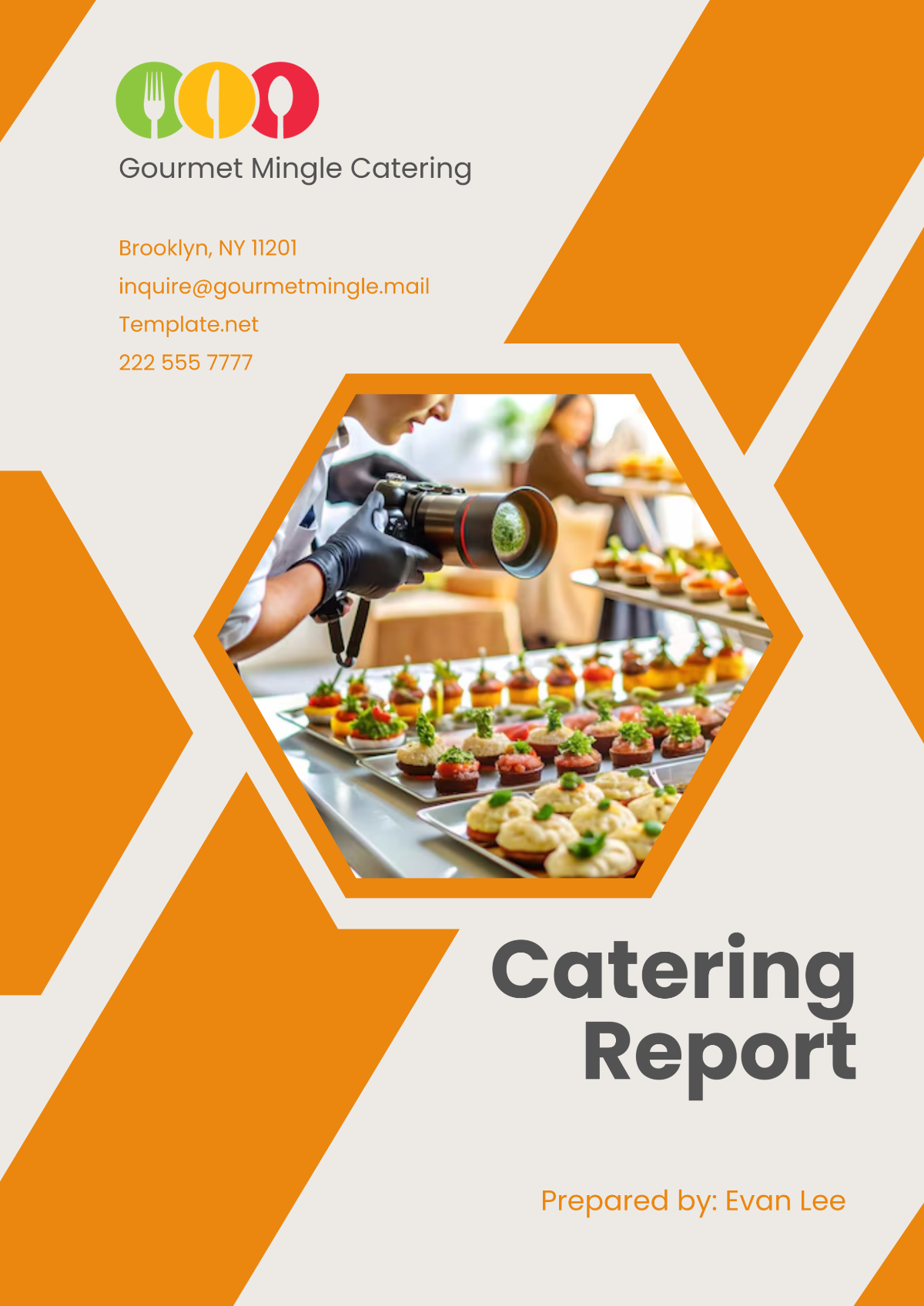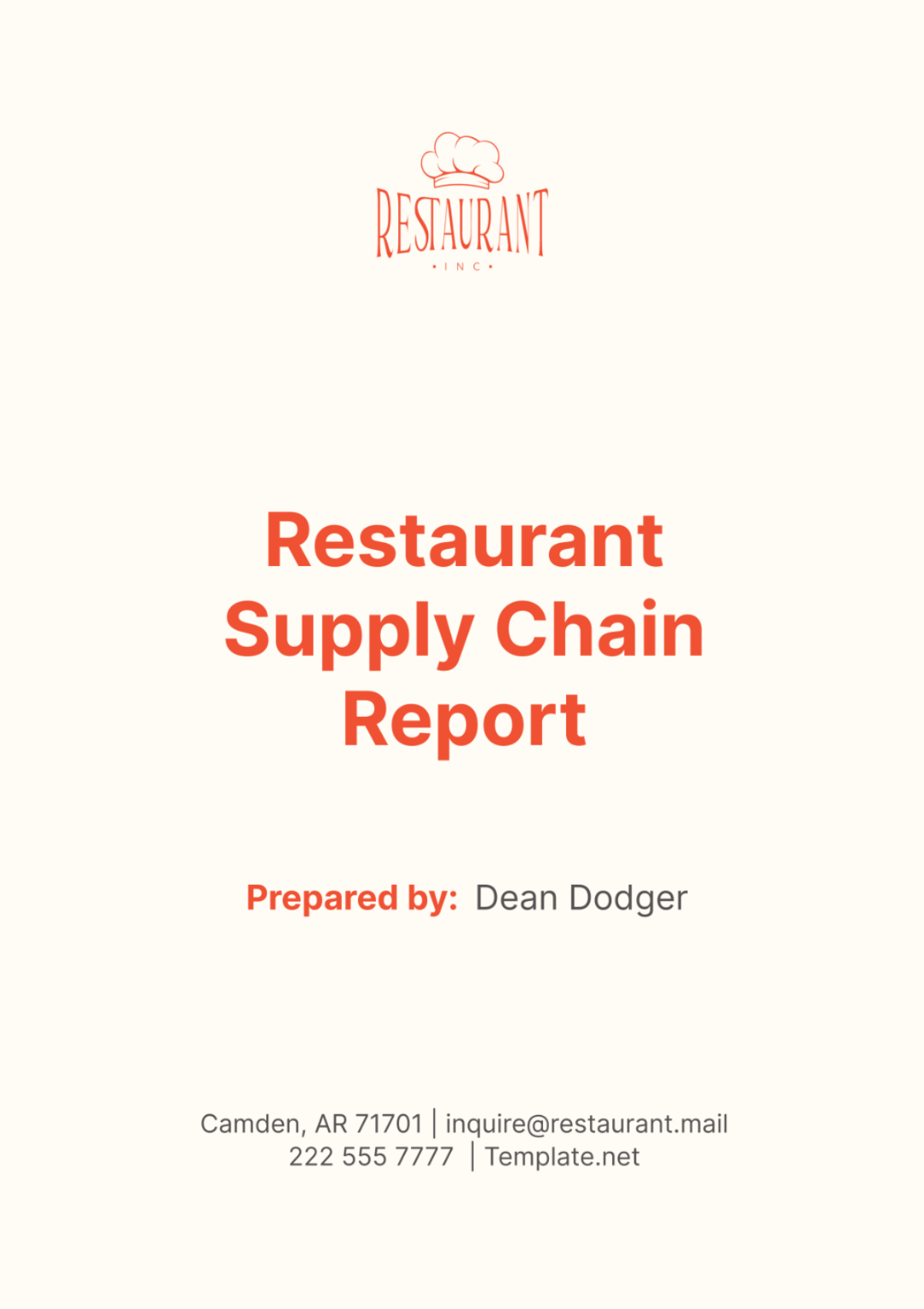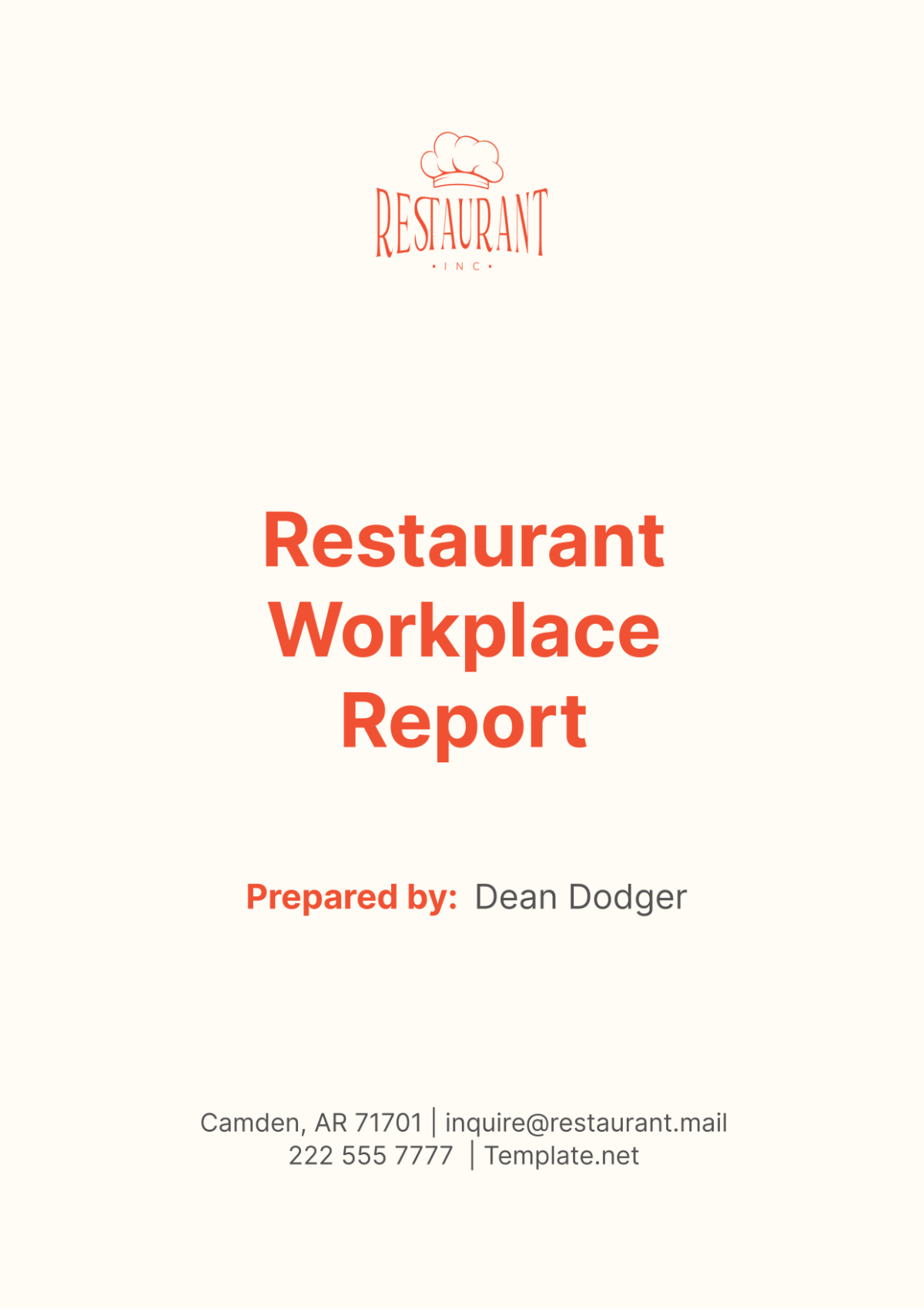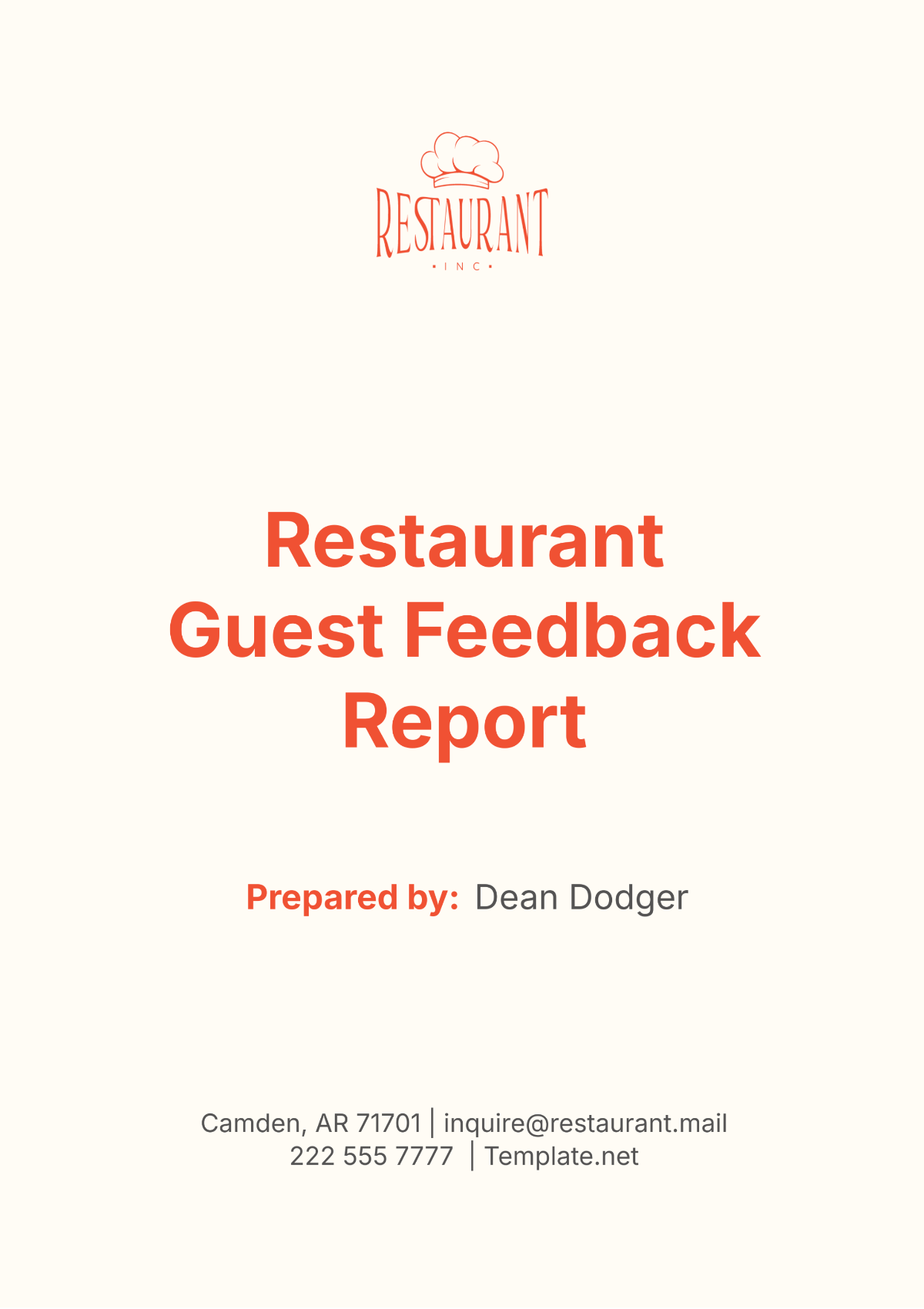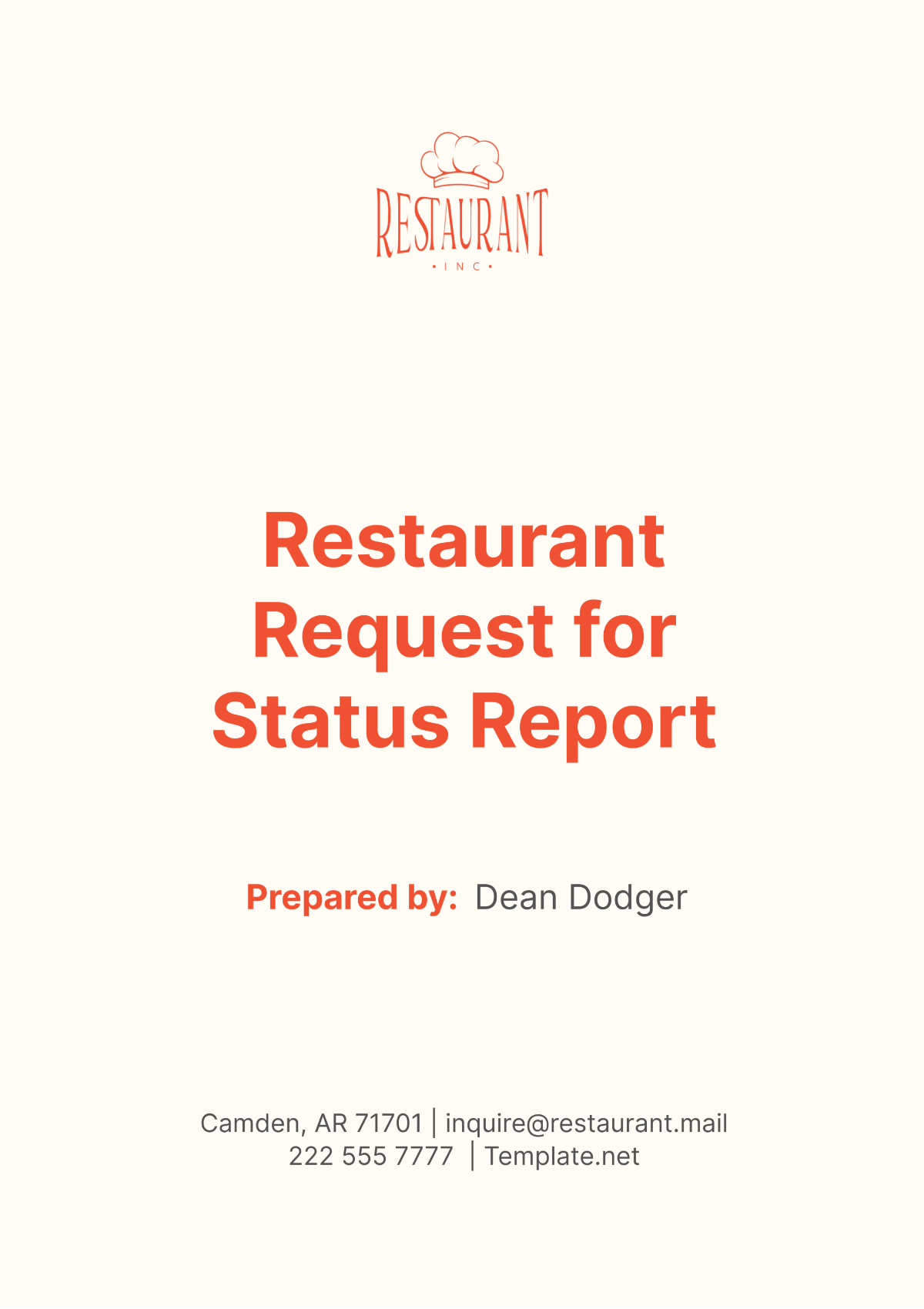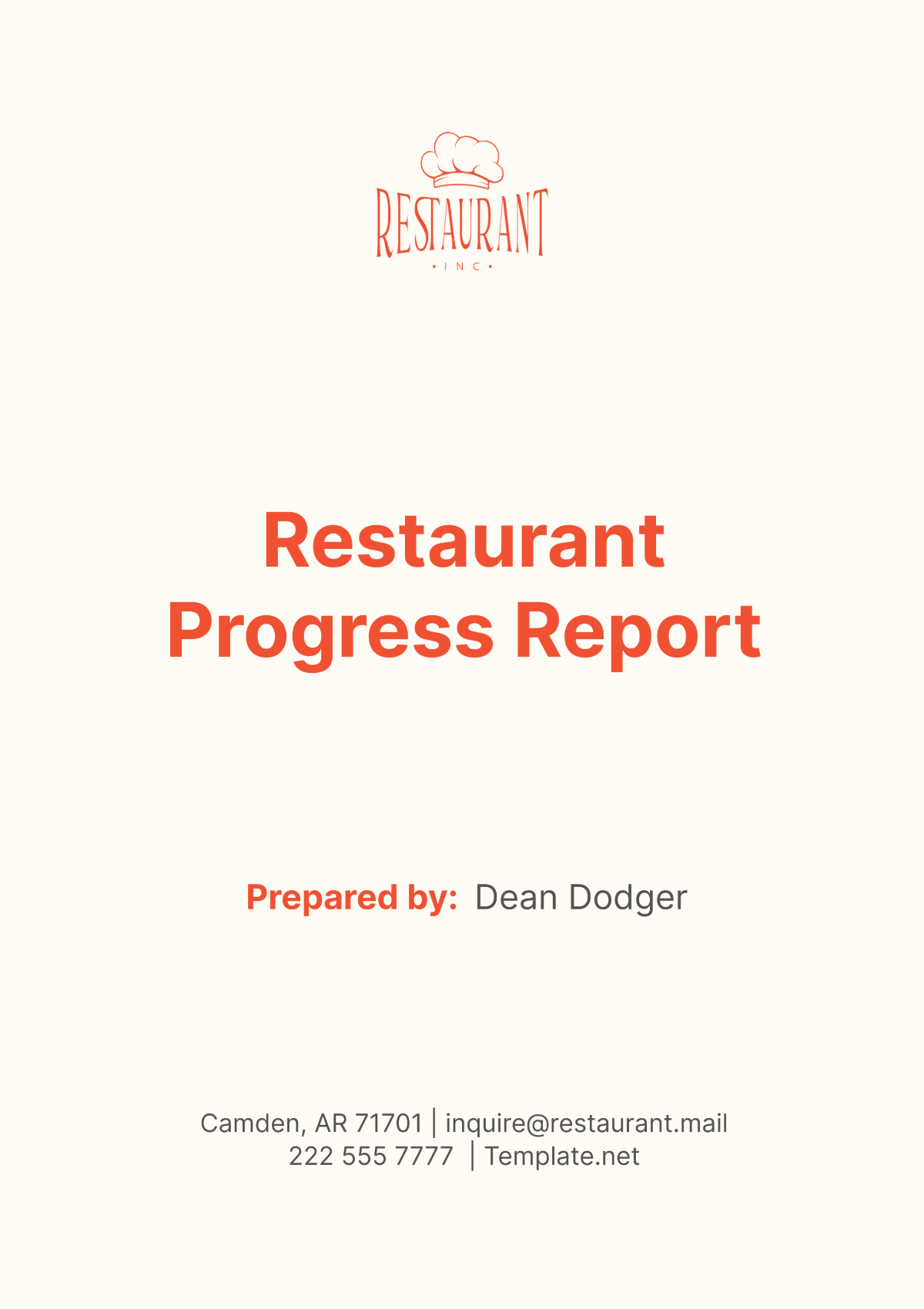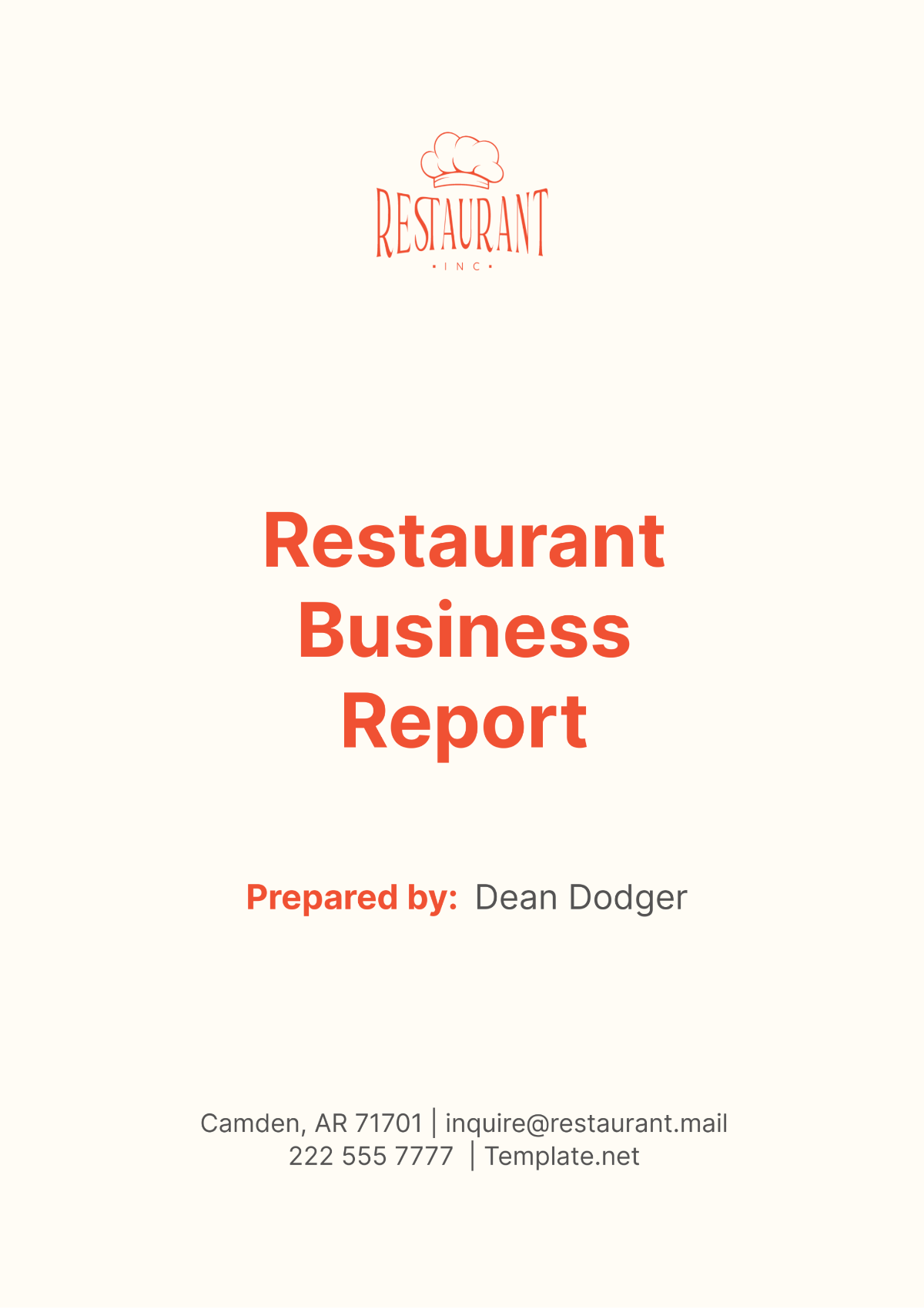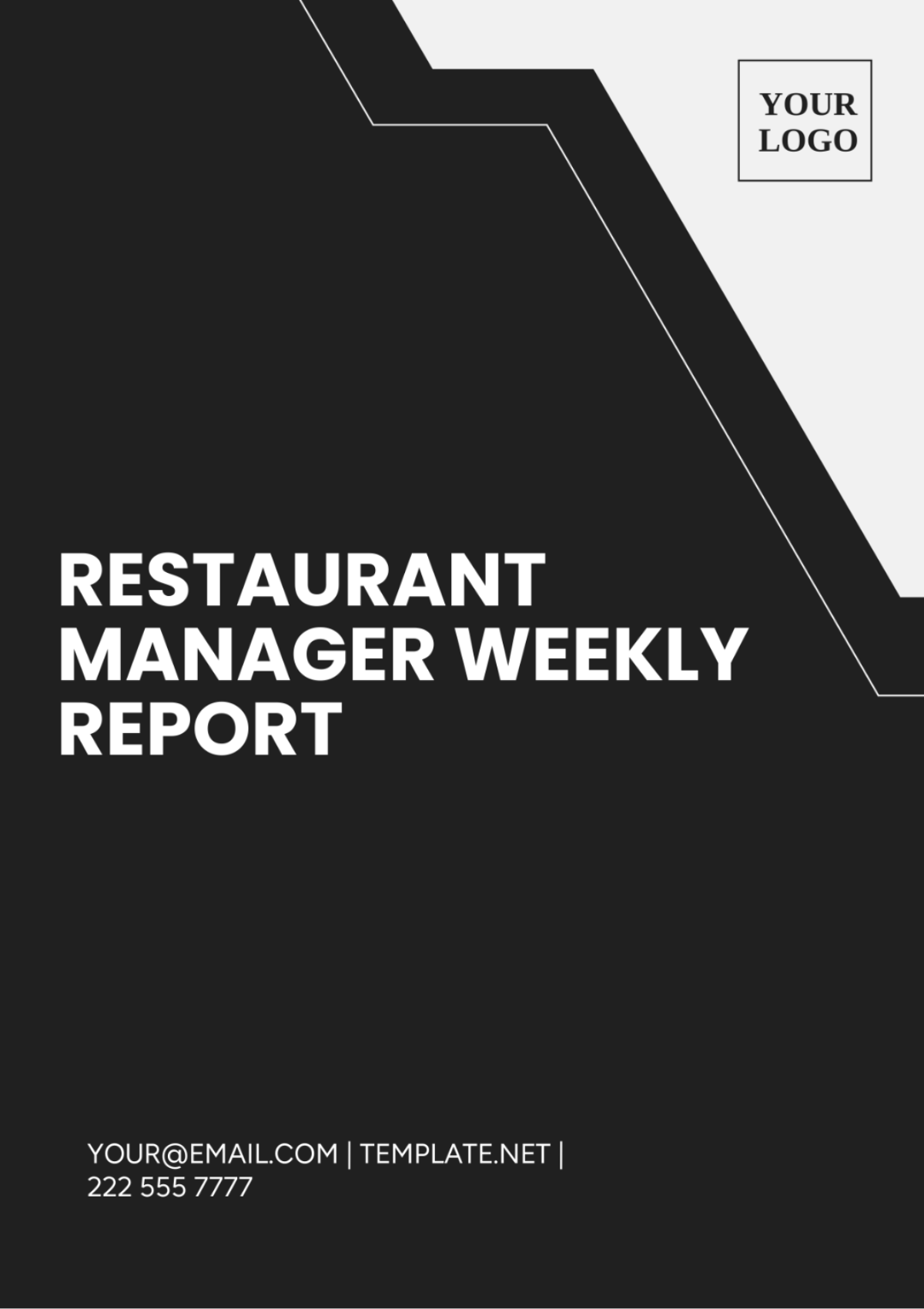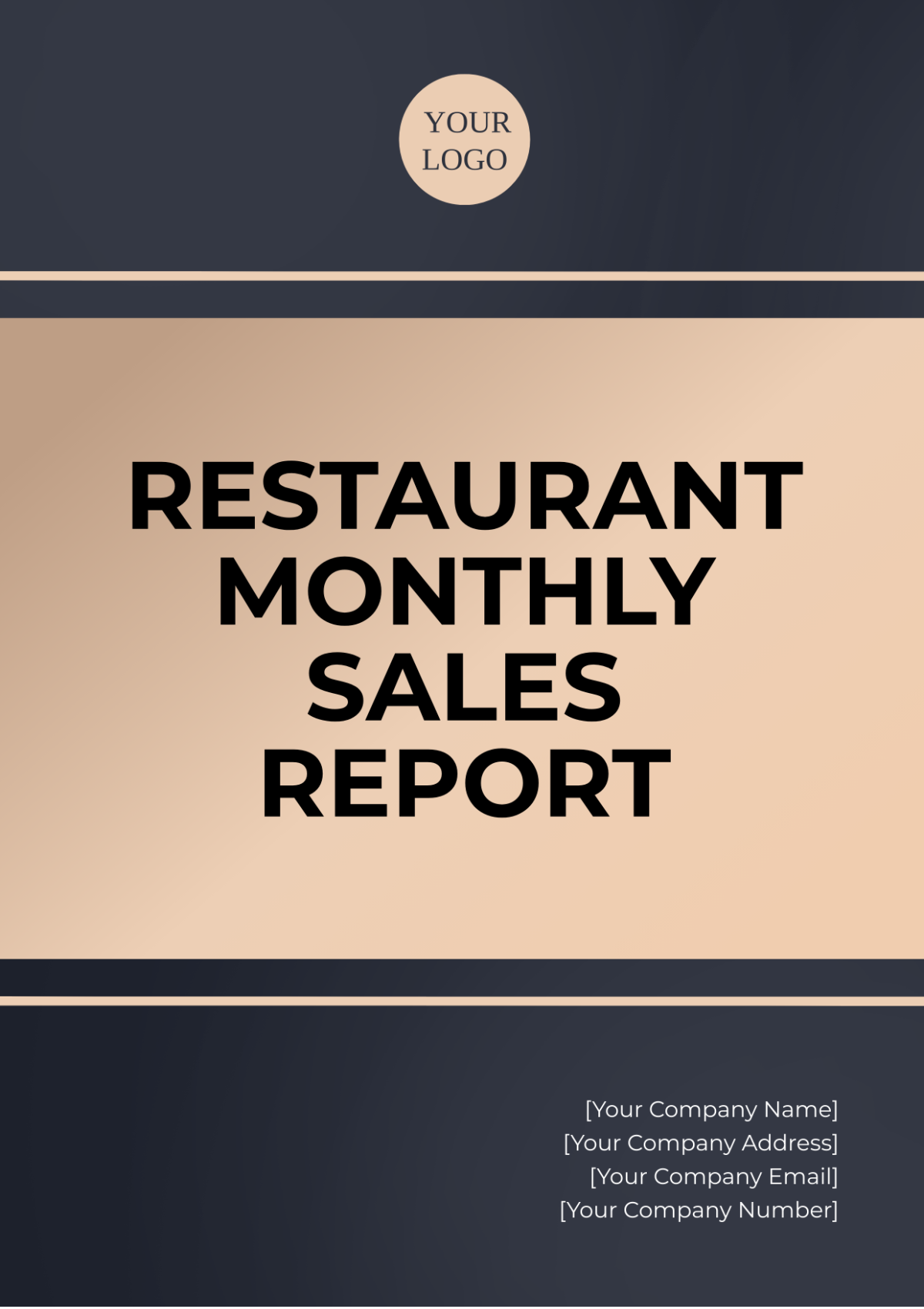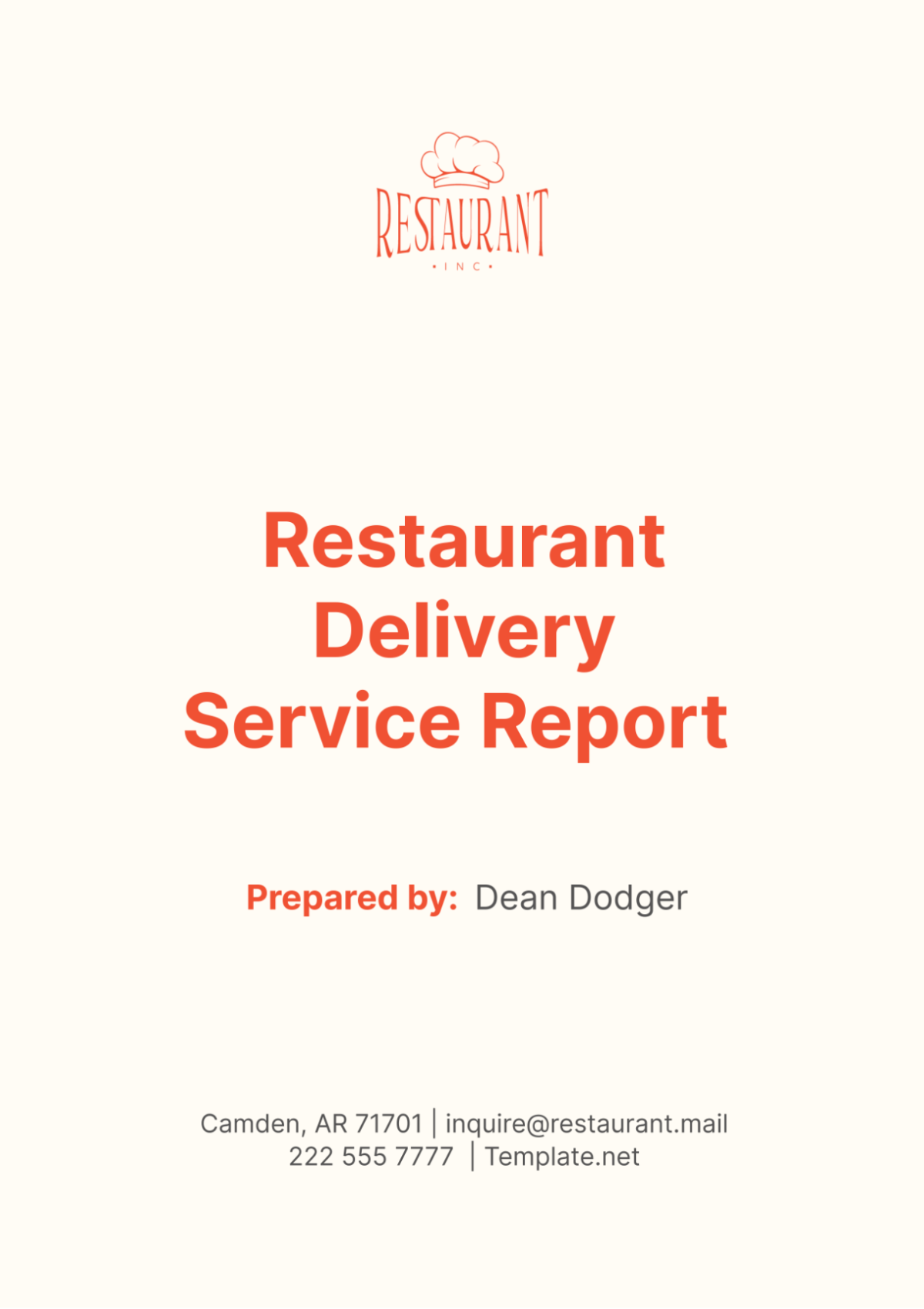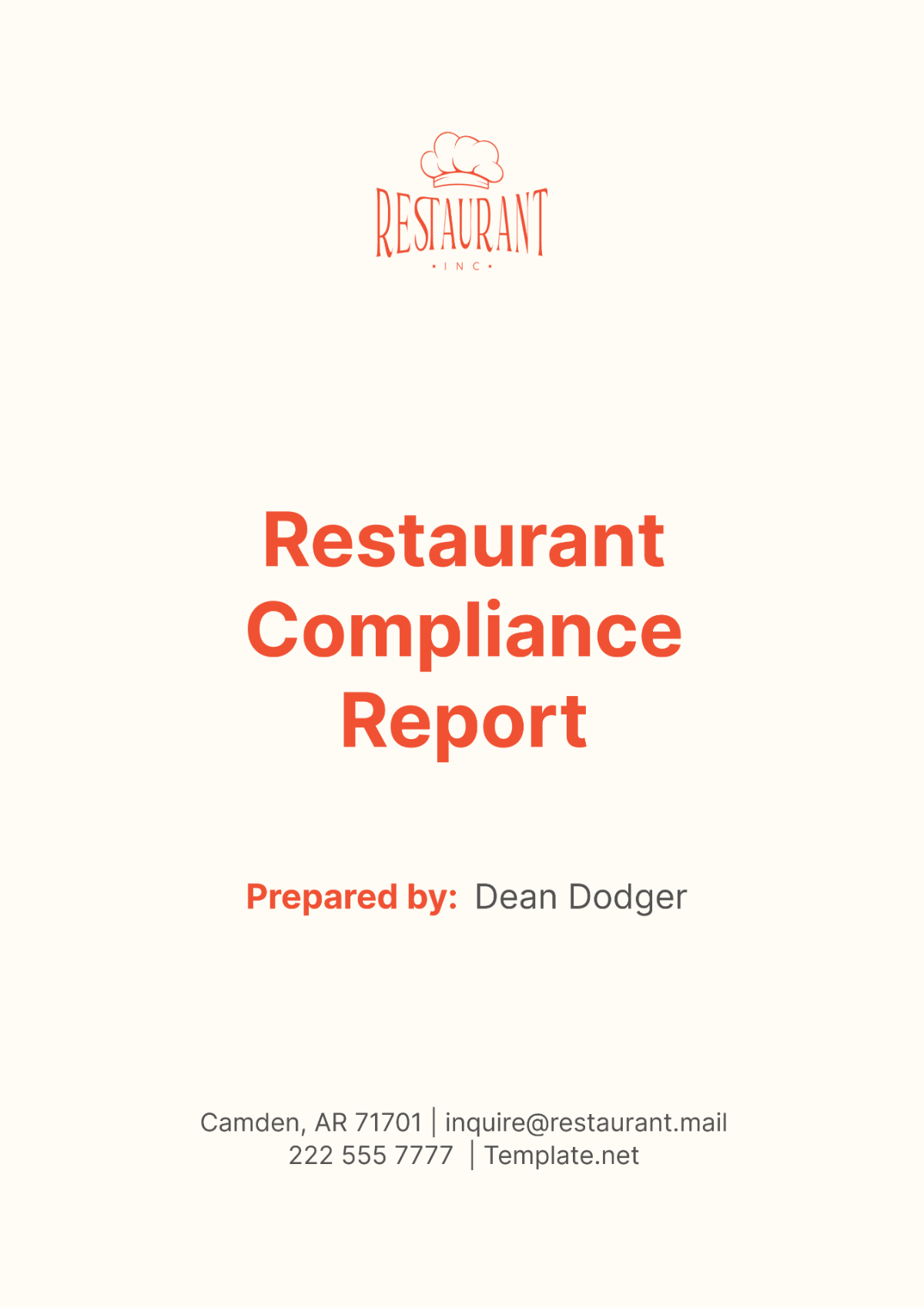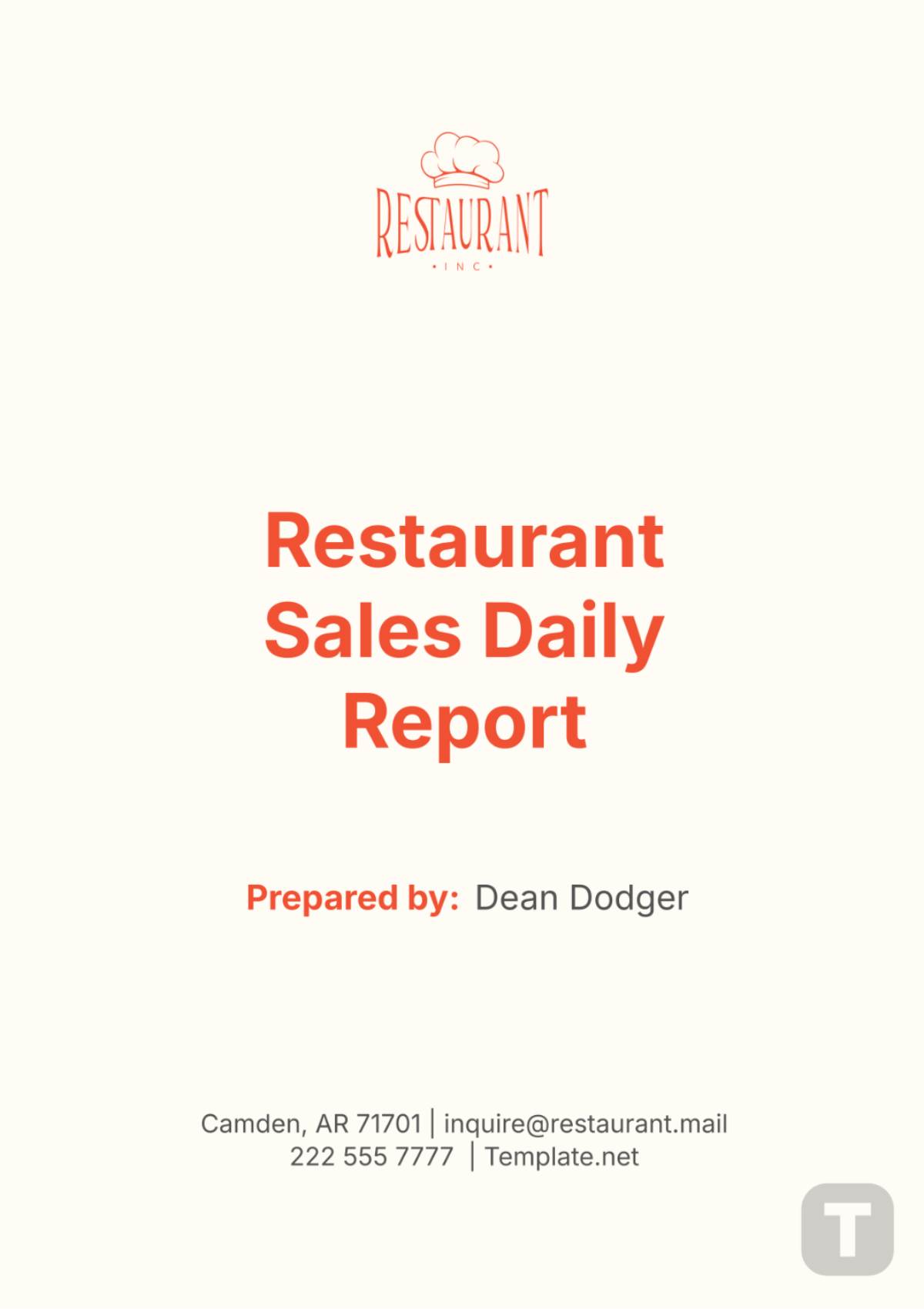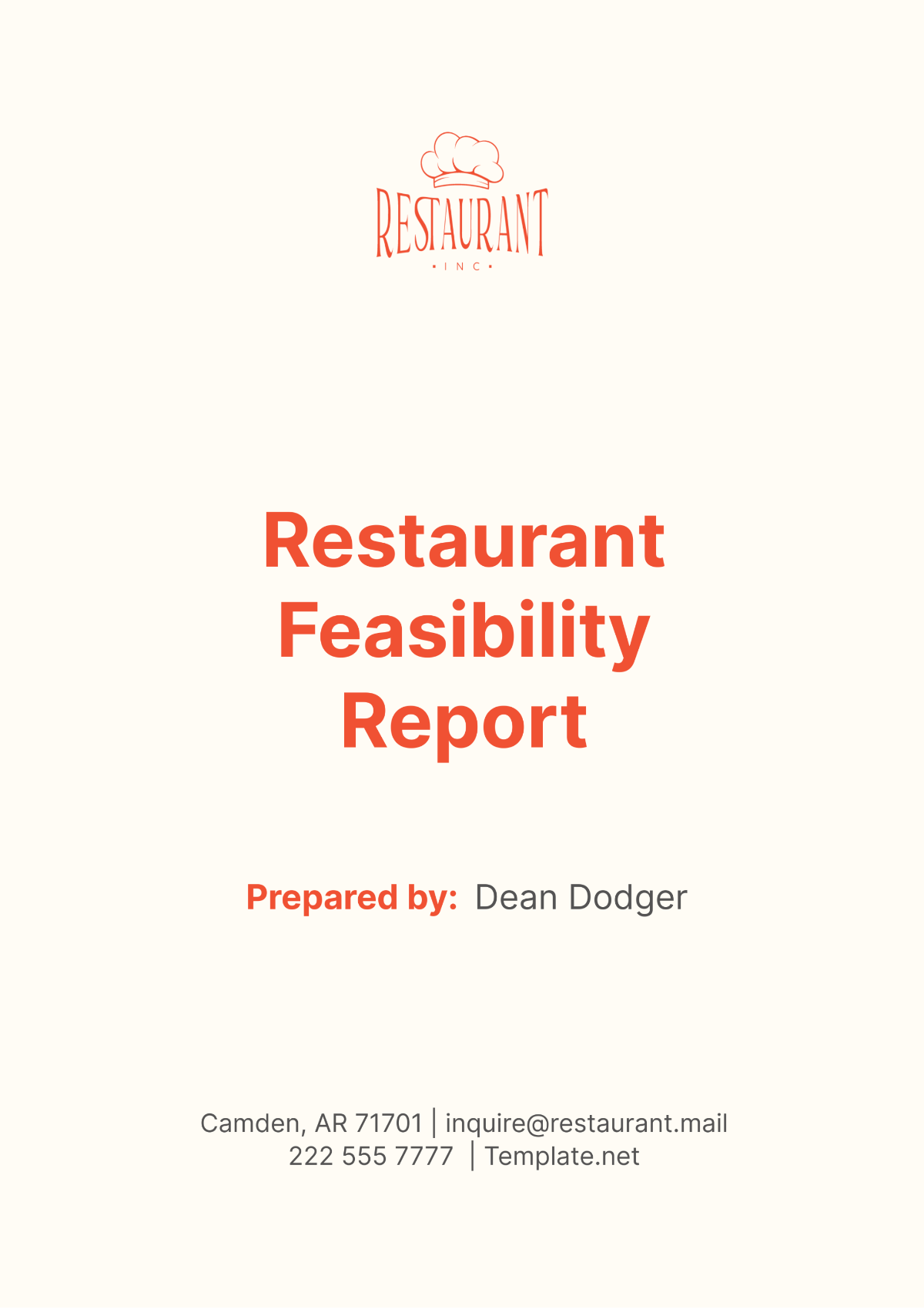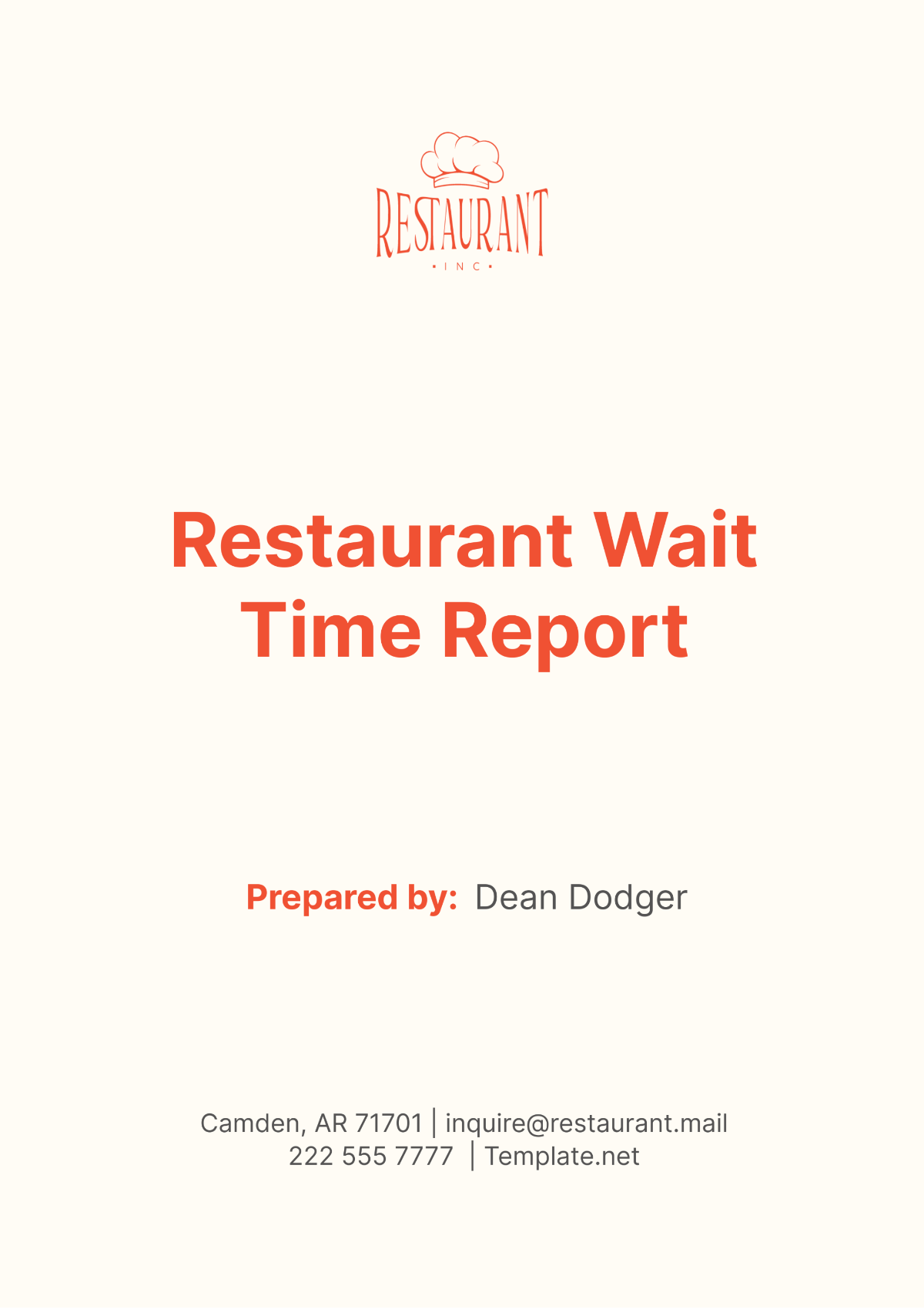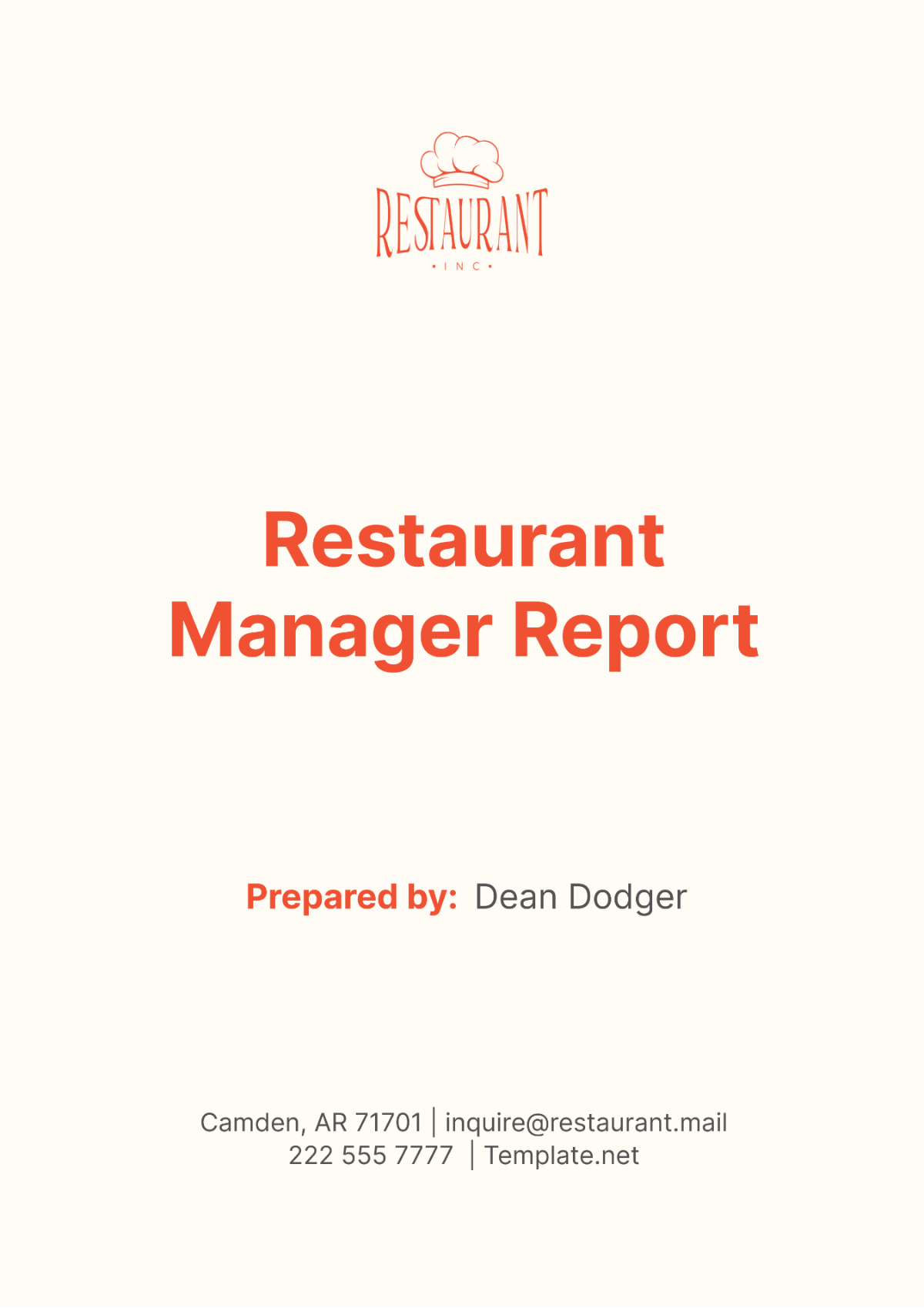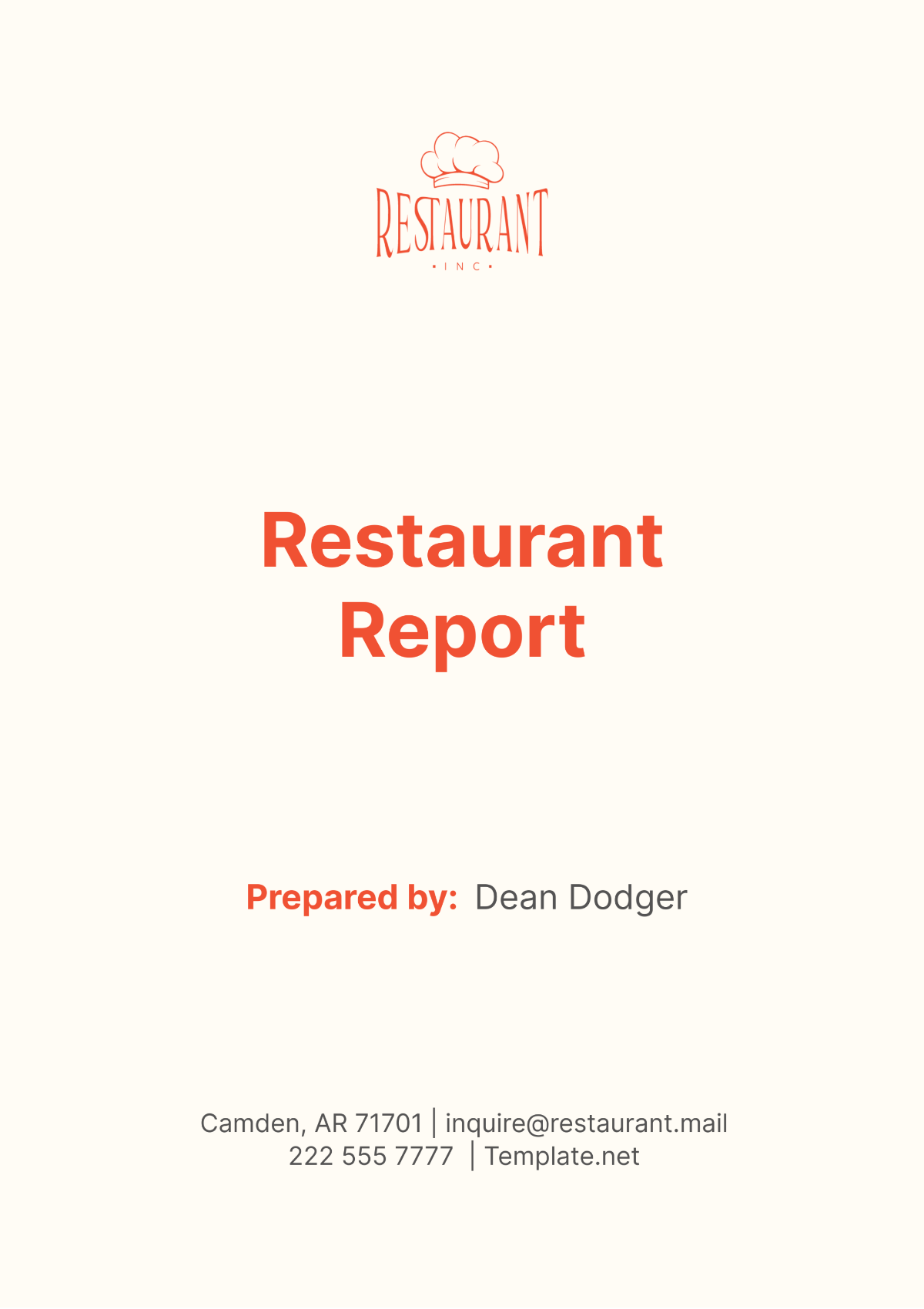Restaurant Request for Status Report
I. Introduction
A. Purpose
The purpose of this report is to provide an update on the current status of [Your Company Name]'s restaurant operations. It aims to offer insights into various aspects of the restaurant's performance, including financial, customer satisfaction, and operational efficiency, to stakeholders and management. By examining key metrics and feedback, this report will facilitate informed decision-making and strategic planning.
B. Scope
This report will encompass an analysis of [Your Company Name]'s restaurant performance over the last quarter (Q2 2050). It will delve into revenue generation, cost management, customer feedback, operational efficiency, and progress on ongoing projects or initiatives. Additionally, it will provide an overview of the restaurant's position in the market and any emerging trends that may impact its operations.
II. Financial Performance
A. Revenue Analysis
Revenue for the period of Q2 2050 amounted to $150,000. This represents a decrease of 10% compared to the previous quarter. The revenue analysis will further examine the breakdown of revenue sources, including dine-in, takeout, catering, and any other revenue streams.
B. Cost Analysis
Total expenses for the same period were [$120,000]. A detailed breakdown of major expenses, such as food cost [$40,000], labor cost [$50,000], utilities [$10,000], marketing [$12,000], and other operational expenses [$8,000], is provided in Table 1 below.
Table 1: Expense Breakdown
Expense Category | Amount ($) |
|---|---|
Food Cost | [$40,000] |
Labor Cost | [$50,000] |
Utilities | [$10,000] |
Marketing | [$12,000] |
Other | [$8,000] |
The cost analysis aims to identify areas of cost-saving opportunities and efficiency improvements to optimize overall profitability.
C. Profit Margin
The current profit margin stands at 20%, indicating a decline compared to the previous quarter. Further analysis will be provided to assess factors influencing profit margins, such as pricing strategies, cost control measures, and sales performance.
III. Customer Feedback
A. Satisfaction Survey Results
Based on a recent satisfaction survey conducted in Q2 2050, [Your Company Name] received responses from 300 customers. The overall satisfaction score averaged at 4.5 out of 5, reflecting a high level of customer satisfaction. Key areas of strength highlighted in the survey include friendly staff, delicious food, and a welcoming atmosphere.
Despite the positive feedback, there are areas identified for improvement. The survey revealed that customers expressed a desire for quicker service during peak hours and more variety in the menu options. To address these concerns, [Your Company Name] plans to implement additional staff training sessions focused on improving service efficiency and introduce new menu items based on customer preferences and dietary trends.
B. Online Reviews
Analysis of online reviews from platforms such as Yelp, Google Reviews, and TripAdvisor indicates a generally positive sentiment towards [Your Company Name]. Out of 100 reviews analyzed, 80% were rated as either 4 or 5 stars.
The most common positive feedback themes include excellent food quality, attentive service, and a pleasant dining ambiance. However, some negative feedback was noted regarding occasional delays during busy periods and the need for more vegan-friendly options on the menu. In response, [Your Company Name] plans to address service bottlenecks by optimizing workflow processes and enhancing communication among staff members. Additionally, the culinary team will work on developing new vegan-friendly dishes to cater to a wider range of dietary preferences and attract more health-conscious customers.
IV. Operational Efficiency
A. Staffing
[Your Company Name] has maintained optimal staffing levels to meet customer demand while controlling labor costs. As of Q2 2050, the restaurant employs 25 full-time and 15 part-time staff members across various roles, including chefs, servers, and kitchen assistants.
Efforts have been made to streamline scheduling processes and cross-train staff to ensure flexibility and efficiency during peak hours. Regular staff meetings are held to discuss any operational challenges and brainstorm solutions collaboratively.
B. Inventory Management
Inventory turnover rate for Q2 2050 stood at 4.5, indicating a healthy balance between inventory levels and sales. This figure is calculated by dividing the average inventory value by the cost of goods sold during the quarter. [Your Company Name] has implemented inventory tracking software to monitor stock levels in real-time and identify any discrepancies or potential shortages proactively.
Efforts are ongoing to optimize inventory procurement processes and minimize waste through better forecasting and supplier management strategies. By establishing strategic partnerships with reliable suppliers and negotiating favorable pricing agreements, [Your Company Name] aims to reduce inventory holding costs and improve overall operational efficiency. Regular audits are conducted to assess inventory accuracy and identify areas for improvement in inventory management practices.
V. Ongoing Projects and Initiatives
A. New Menu Development
Progress on the development of a new menu is at [50%] completion as of Q2 2050, with anticipated launch date set for July 1, 2050. The new menu will feature a diverse selection of culinary offerings, including seasonal specials, signature dishes, and revamped classics to cater to evolving customer preferences and dietary trends.
The menu development process involves collaboration between [Your Company Name]'s culinary team, led by Head Chef [Chef Name], and input from frontline staff and customer feedback. Market research and trend analysis are also conducted to identify emerging food trends and incorporate them into the menu offerings.
B. Renovation Project
The renovation project is progressing according to schedule and budget, with completion expected by September 30, 2050. The objective of the renovation is to enhance the overall dining experience for customers by modernizing the interior décor, improving seating arrangements, and upgrading facilities such as restrooms and kitchen equipment.
[Your Company Name] has enlisted the services of [Renovation Company Name] to oversee the renovation project, ensuring compliance with safety regulations and quality standards. Regular site inspections and progress reports are conducted to monitor the project's status and address any issues or delays promptly.
VI. Conclusion
[Your Company Name] continues to make significant strides in enhancing its restaurant operations and customer experience. Despite facing challenges such as fluctuating market conditions and evolving consumer preferences, the restaurant has remained resilient and adaptable. By prioritizing customer satisfaction, optimizing operational efficiency, and investing in strategic initiatives such as menu development and renovation projects, [Your Company Name] is well-positioned for sustained growth and success in the competitive [Restaurant Industry] landscape.
Moving forward, [Your Company Name] remains committed to delivering exceptional dining experiences, fostering a culture of continuous improvement, and embracing innovation to stay ahead of the curve. With the support of its dedicated team members, loyal customers, and valued stakeholders, [Your Company Name] looks forward to achieving its long-term goals and solidifying its reputation as a premier dining destination.
VII. Next Steps
A. Strategic Initiatives
[Your Company Name] will focus on implementing strategic initiatives aimed at driving growth and enhancing competitiveness in the market. This includes:
Launching targeted marketing campaigns to promote new menu offerings and attract a wider customer base.
Expanding delivery and takeout services to capitalize on the growing demand for off-premises dining options.
Strengthening partnerships with local suppliers and vendors to source high-quality ingredients and support sustainability efforts.
B. Continuous Improvement
[Your Company Name] is committed to continuous improvement across all aspects of its operations. Key areas of focus include:
Conducting regular staff training sessions to enhance service quality, product knowledge, and customer engagement skills.
Implementing feedback mechanisms to gather insights from customers and employees, enabling [Your Company Name] to address issues promptly and make data-driven decisions.
Investing in technology solutions, such as point-of-sale systems and inventory management software, to streamline processes and improve operational efficiency.
C. Community Engagement
[Your Company Name] recognizes the importance of community engagement and will actively participate in local events and initiatives. This includes:
Sponsoring charity events and fundraisers to support worthy causes and give back to the community.
Collaborating with neighboring businesses to organize promotional events and cross-promotional opportunities.
Hosting educational workshops and cooking classes to engage with customers and share culinary knowledge and experiences.
Table: Upcoming Events and Initiatives
Date | Event / Initiative |
|---|---|
June 2050 | Launch of New Menu |
July 2050 | Community Food Drive |
August 2050 | Cooking Class with Head Chef [Chef Name] |
September 2050 | Restaurant Renovation Completion Celebration |
D. Feedback and Monitoring
[Your Company Name] will continue to monitor key performance indicators and solicit feedback from stakeholders to assess the effectiveness of implemented strategies and initiatives. This includes:
Analyzing financial reports, customer satisfaction surveys, and online reviews to gauge performance and identify areas for improvement.
Conducting regular operational reviews and performance evaluations to ensure alignment with organizational goals and objectives.
Maintaining open lines of communication with staff, customers, and suppliers to foster transparency, trust, and collaboration.
